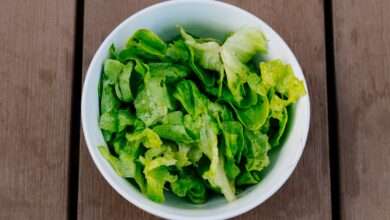
With its pretty yellow color and its acid taste, the lemon is recognizable among a thousand. This citrus fruit with unique health benefits is consumed all over the world and has seen its consumption explode over the past ten years. In the kitchen, it fits absolutely everywhere, from appetizer to dessert, to our delight.
Characteristics of lemon
- Strong antioxidant power;
- Interesting pectin content;
- Slimming ally;
- Promotes cardiovascular health;
- Helps prevent certain chronic diseases.
Nutritional and caloric values of lemon
For 100 g of fresh lemon:
| Nutrients | Average content |
| Calories | 17 |
| Proteins | 0,6 g |
| Carbohydrates | 5,4 g |
| Lipids | 0,2 g |
| Dietary fiber | 1,6 g |
An exceptional and protective composition
The antioxidant power of lemon and lime is considered low because it is calculated based on a normal serving, which is relatively small. Nevertheless, lemon and lime contain various components that can have a favorable effect on health and on the prevention of several diseases:
- Flavonoids : Lemon and lime contain different types of flavonoids. These antioxidant compounds make it possible, among other things, to neutralize free radicals in the body and thus prevent the onset of cardiovascular diseases, certain cancers and other chronic diseases. The main flavonoids contained in lemon and lime are eriocitrin and hesperetin. Experiments conducted on animals have shown that eriocitrin and hesperetin, extracted from the rind (skin) of lemons or their juice, can reduce or prevent the increase in damage related to oxidative stress. In addition, eriocitrin could induce apoptosis of leukemic cells. The white part of the lemon peel is the one that contains the most of these 2 flavonoids;
- Nobiletin : this other type of flavonoid contained in citrus fruits is said to have antiangiogenic properties. It would help slow the growth of tumors and metastases. Finally, according to a study carried out on cells of the pancreas, the capacity to inhibit the proliferation of cancerous cells of the lime would be proportional to its content in flavonoids as well as in limonoids;
- Limonoids: the main limonoids contained in citrus fruits are limonine and nomiline. They are mainly found in the pips, but also in the juice. Limonoids have some antioxidant capacity. They could also lead to the apoptosis of cancerous neuroblast cells (embryonic nerve cells, which then differentiate into neurons). Studies suggest that they could prevent certain types of cancer in animals. For example, obacunone, a type of limonoid, has been shown to decrease the incidence of colon tumors and to decrease the number of tumors in the mouth. similar effect in humans. The synergistic action of several limonoids with each other, or with other compounds (such as flavonoids),
- Soluble fiber: citrus fruits are rich in soluble fibre, mainly pectin, which is found in the rind and in the white membrane around the flesh (albedo). Through their ability to lower blood cholesterol, soluble fibers help reduce the incidence of cardiovascular disease. Researchers have shown that lemon peel was effective in lowering blood and liver cholesterol levels in animals. However, in addition to pectin, other compounds present in lemon peel could participate in this process. In addition, lemon pectin, compared to that of 3 other citrus fruits (grapefruit, tangerine and orange), has the best ability to inhibit the growth of certain cancerous tumors in vitro. However,
- Proteins : a team of researchers has discovered that a lime juice extract could improve the immune response in animals. This effect would be attributable to a set of proteins present in the lime juice extract. These same protein components could participate in stopping the proliferation of cancer cells observed in vitro.
Finally, lemon is also a good source of antioxidant vitamin C, copper and iron.








